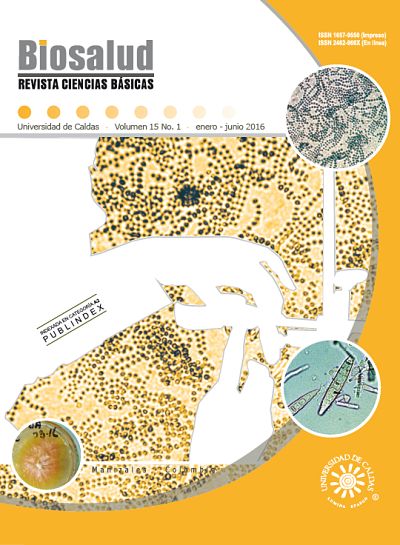Authors
Abstract
Objectives: To study the effect of rabies infection on the dendritic ultrastructure of pyramidal neurons in the cerebral cortex of mice intramuscularly inoculated with rabies virus. Methods: Adult mice inoculated with rabies virus and mice inoculated with vehicle solution without the virus (controls) were fixed by intracardiac perfusion with a solution containing 4% paraformaldehyde and 2% glutaraldehyde. When infected animals showed advanced signs of disease, their brains were extracted and cut into the coronal plane on a vibratome. Small and thin fragments of these cuts containing motor cortex area were processed for transmission electron microscopy. Results: Distal dendrites of pyramidal neurons of control animals showed long and narrow mitochondria and abundant microtubules arranged in parallel with the cell membrane. In distal dendrites of pyramidal neurons of rabiesinfected mice some irregular shape electrondense structures similar to myelin figures were observed but elongated mitochondria were not observed, and microtubules were scarce. Some dendrites also exhibited vacuole formation interrupting the continuity of cytoplasm and microtubules. Conclusion: Infection with rabies virus produced ultrastructural changes within dendrites of the cortical pyramidal neurons that apparently were not known. These results are consistent with previous findings using other techniques and experimental models where it has been shown dendritic pathology induced by infection with rabies.
References
2. Torres-Fernández O, Lamprea N, Pimienta H. Demostración del ingreso del virus de la rabia a la corteza cerebral a través de las neuronas piramidales de la capa V. Iatreia 2005; 18:S85-
S86.
3. Lamprea N, Torres-Fernández O. Immunohistochemical evaluation of calbindin expression in mouse brain at different times after rabies virus inoculation. Colomb Med (Cali) 2008; 39(Suppl
3):7-12.
4. Torres-Fernández O, Yepes GE, Gómez JE. Neuronal dendritic morphology alterations in the cerebral cortex of rabies-infected mice: a Golgi study. Biomédica 2007; 27:605-13.
5. Li XQ, Sarmento L, Fu ZF. Degeneration of neuronal processes after infection with pathogenic, but not attenuated, rabies viruses. J Virol 2005; 79:10063-8.
6. Scott CA, Rossiter JP, Andrew RD, Jackson AC. Structural abnormalities in neurons are sufficient to explain the clinical disease and fatal outcome of experimental rabies in yellow fluorescent proteinexpressing transgenic mice. J Virol 2008; 82:513-21.
7. Song Y, Hou J, Qiao B, Li Y, Xu Y, Duan M, et al. Street rabies virus causes dendritic injury and F-actin depolimerization in the hippocampus. J Gen Virol 2013; 94:276-83.
8. Matsumoto S. Electron microscope studies of rabies virus in mouse brain. J Cell Biol 1963; 19:565-91.
9. Hummeler K, Koprowski H, Wiktor TJ. Structure and development of rabies virus in tissue culture. J Virol 1967; 1:152-70.
10. Miyamoto K, Matsumoto S. Comparative studies between pathogenesis of street and fixed rabies infection. J Exp Med 1967; 125:447-75.
11. Matsumoto S. Electron microscopy of central nervous system infection. In: Baer GM, ed. The nature history of rabies. New York: Academic Press; 1975. p. 217-33.
12. Hummeler K, Atanasiu P. Electron microscopy. In: Meslin FX, Kaplan MM, Koprowski H, eds. Laboratory techniques in rabies. Geneva: World Health Organization; 1996. p. 209-17.
13. Iwasaki Y, Clark H. Cell to cell transmission of virus in the central nervous system: II. Experimental rabies in mouse. Lab Invest 1975; 33:391-99.
14. Iwasaki Y, Liu DS, Yamamoto T, Konno H. On the replication and spread of rabies virus in the human central nervous system. J Neuropathol Exp Neurol 1985; 44:185-95.
15. De Brito T, De Fátima M, Tiriba A. Ultrastructure of the Negri body in human rabies. J Neurol Sci 1973; 20:363-72.
16. Sandhyamani S, Roy S, Gode GR, Kalla GN. Pathology of rabies: a light- and electron-microscopical study with particular reference to the changes in cases with prolonged survival. Acta Neuropathol 1981; 54:247-51.
17. Manghani DK, Dastur DK, Nanavaty AN, Patel R. Pleomorphism of fine structure of rabies virus in human and experimental brain. J Neurol Sci 1986; 75:181-93.
18. Fekadu M, Chandler FW, Harrison AK. Pathogenesis of rabies in dogs inoculated with and Ethiopian rabies virus strain. Immunofluorescence, histologic and ultrastructural studies of the central nervous system. Arch Virol 1982; 71:109-26.
19. Charlton KM, Casey GA, Webster WA, Bundza A. Experimental rabies in skunks and foxes. Pathogenesis of the spongiform lesions. Lab Invest 1987; 57:634-45.
20. Velandia ML, Pérez-Castro R, Hurtado H, Castellanos JE. Ultrastructural description of rabies virus infection in cultured sensory neurons. Mem Inst Oswaldo Cruz 2007; 102:441-47.
21. Peters A, Palay S, Webster H. The fine structure of the nervous system. Neurons and their supporting cells. 3rd ed. New York: Oxford University Press; 1991.
22. Hurtado AP, Rengifo AC, Torres-Fernández O. Immunohistochemical over expression of MAP-2 in the cerebral cortex of rabies-infected mice. Int J Morphol 2015; 33:465-70.
23. Sjöestrand FS, Cedergren EA, KarlssonU. Myelin-like figures formed from mitochondrial material. Nature 1964; 202:1075-8.
24. Le Beux Y, Hetenyi G Jr, Phillips MJ. Mitochondrial myelin-like figures: a non-specific reactive process of mitochondrial phospholipid membranes to several stimuli. Z. Zellforsch Mikrosk Anat 1969; 99:491-506.
25. Miguet-AlfonsiHYPERLINK “http://www.ncbi.nlm.nih.gov/pubmed?term=Miguet-Alfonsi%20C%5BAuthor%5D&cauthor=true&cauthor_uid=12147305” C, Prunet C, Monier S, Bessède G, LemaireEwing S, Berthier A, et al. Analysis of oxidative processes and of myelin figures formation before and after the loss of mitochondrial transmembrane potential during 7-beta-hydroxycholesterol and
7-ketocholesterol-induced apoptosis: comparison with various pro-apoptotic chemicals. Biochem Pharmacol 2002; 64:527-41.
26. Lin CH, Chang LW, Wei YH, Wu SB, Yang CS, Chang WH, et al. Electronic microscopy evidence for mitochondria as targets for Cd/Se/Te-based quantum dot 705 toxicity in vivo. Kaohsiung J Med Sci 2012; 28(7 Suppl):S53-62.
27. Alandijany T, Kammouni W, Roy-Chowdhury SL, Fernyhough P, Jackson AC. Mitochondrial dysfunction in rabies virus infection of neurons. J. Neurovirol. 2013; 9:537-49.
28. Robards AW, Wilson AJ. Procedures in electron microscopy. Chichester: John Wiley & Sons; 1993. p. 5:1:54 – 5:1:55.
29. Castejon OJ. Electron microscopy of myelin figures in normal and pathological tissues. A review. Acta Microscopica 2008; 17:13-19.
30. Schneeberger EE, Lynch RD, Geyer RP. Glutaraldehyde fixation used to demonstrate altered properties of outer mitochondrial membranes in polyunsaturated fatty acid supplemented cells. Exp Cell Res 1976; 100:117-28.

 pdf (Español (España))
pdf (Español (España))
 FLIP
FLIP


















